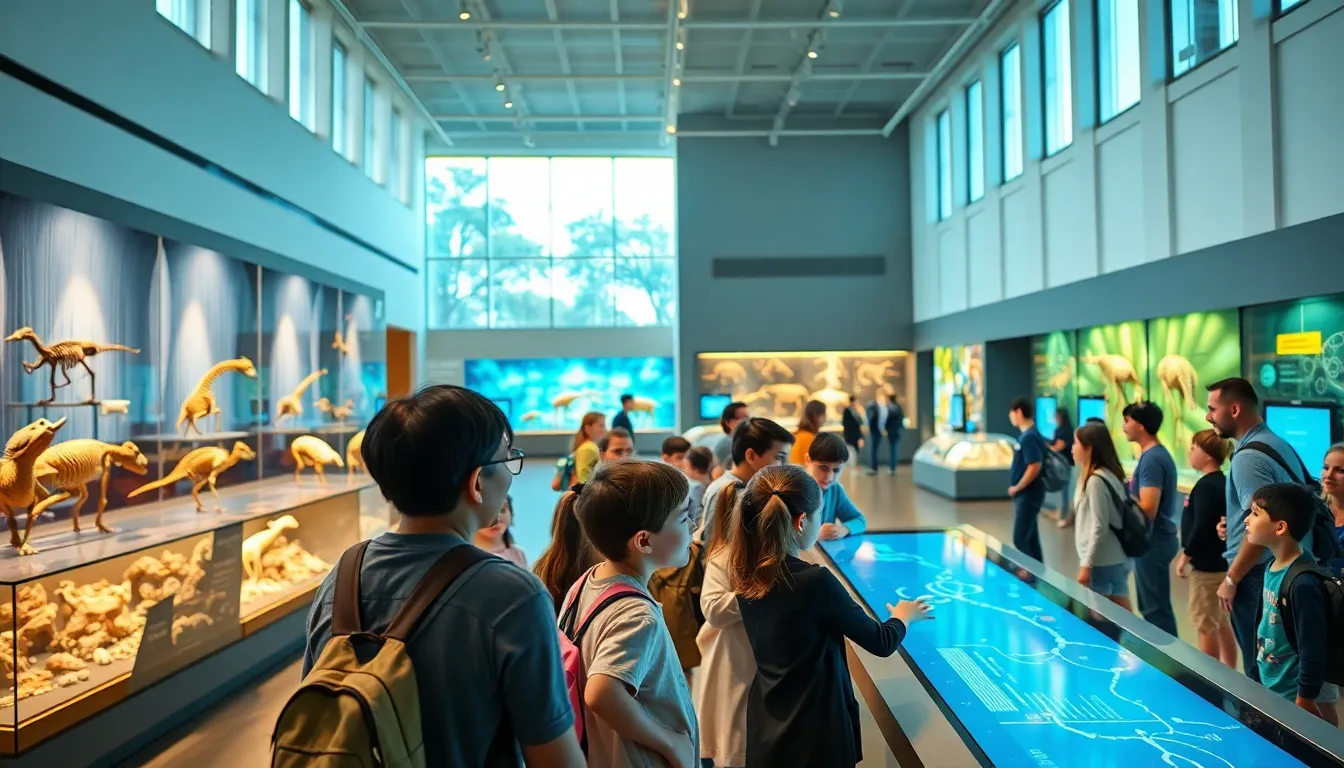Table of Contents
ToggleHave you ever wandered through a life science museum, captivated by the intricate displays and fascinating exhibits? You’re not alone. Life science museums have come a long way since their inception, transforming into vibrant hubs of education and inspiration. Imagine a world where evolution is not merely a theory in textbooks but an engaging reality. In this exploration, we will traverse the historical context, investigate into the roles these museums play in evolution education, and peek into the future of these extraordinary spaces. Buckle up, because this journey through time might just evoke your inner dino-detective.
Historical Context of Life Science Museums

The origins of life science museums can be traced back to the early 18th century when curiosity cabinets were all the rage. These cabinets housed a mix of natural history specimens, artifacts, and oddities that sparked wonder in many. Fast forward to the 19th century, and we see the establishment of more formal institutions, like the Natural History Museum in London in 1881. This period marked an important transition where these museums began to focus on education rather than merely collection.
As society’s understanding of science evolved, so did the mission of life science museums. They adapted to reflect emerging scientific theories. For instance, the acceptance of Charles Darwin’s theory of evolution reshaped how these institutions presented biological diversity. Instead of static displays, they started promoting interactive learning, encouraging visitors to engage with the stories of life on Earth. This historical evolution set the stage for the vibrant environments we see today, combining both education and entertainment.
The Role of Evolution in Life Science Education
Evolution is a cornerstone of life science education. Museums across the globe are emphasizing this concept to unravel the complex tapestry of life. They serve as interactive classrooms, helping visitors grasp how species adapt over time through natural selection.
Consider how exhibits might illustrate the journey from single-celled organisms to diverse life forms. With displays featuring fossils, models, and interactive timelines, museums allow attendees to visualize the progression of life. Also, educational programs that accompany these exhibits provide deep dives into specific topics, making evolution not just a term, but a relatable narrative.
Besides, these museums often host workshops and lectures, bringing in experts to discuss contemporary evolutionary biology. This bolsters understanding and keeps the conversation around evolution dynamic and relevant. Eventually, life science museums are not just educating the public: they are fostering a community of inquiry centered around the marvels of evolution.
Key Features of Modern Life Science Museums
Modern life science museums are replete with features that enhance visitor engagement and educational value.
Innovative Exhibits and Interactive Experiences
evolutionary models are not just for academic papers anymore: they are on display for everyone to see. Museums use innovative exhibits, such as life-size dinosaur replicas and interactive ecosystems, to captivate all ages. Simulations allow visitors to experience different environments and ecosystems, making science tangible. People can virtually jump into coral reefs or walk alongside prehistoric creatures, promoting an immersive experience that traditional methods simply cannot match.
The Impact of Technology on Museum Engagement
Technology plays a pivotal role in reshaping the visitor experience. Augmented reality (AR) and virtual reality (VR) applications enable individuals to explore ancient landscapes or observe evolutionary milestones in real-time. Interactive touchscreen displays provide instant access to additional information, quizzes, and multimedia content. Smart devices can even guide visitors through exhibits, personalizing their tours based on their interests. This digital integration enhances learning and makes it easier to digest complex scientific principles by presenting them in a visually engaging format.
Case Studies of Leading Life Science Museums
The American Museum of Natural History in New York City is a prime example of a leading life science institution. With its comprehensive Dinosaur Hall and a plethora of exhibits on evolutionary biology, this museum draws millions of visitors yearly. Interactive displays and educational programs ensure the fascination with evolution is not just superficial: it’s deep-rooted.
On the other side of the globe, the California Academy of Sciences incorporates sustainable practices within its exhibits. This museum features a living roof, an aquarium, and a planetarium, all while actively engaging visitors with instant science demos. Plus to learning about the evolution of species, attendees gain insights into conservation efforts, illustrating the interconnectedness of life.
These case studies illuminate how various institutions have tailored their approaches to cater to evolving audience needs while promoting the principles of evolution.
The Future of Life Science Museums
Looking ahead, the future of life science museums appears both exciting and challenging. As advancements in technology continue, museums are poised to adopt even more groundbreaking approaches. Imagine exhibitions that use artificial intelligence to personalize visitor experiences based on their interests and previous interactions.
Sustainability will undoubtedly be a crucial facet of future museum designs. Incorporating eco-friendly materials and practices will not only attract environmentally-conscious patrons but also send a strong message about the importance of conservation and the delicate balance of ecosystems, an integral aspect of evolutionary science.
Also, as globalization progresses, these museums will also likely focus on more inclusive narratives featuring diverse voices in science. This means integrating stories from various cultures and perspectives in evolutionary narratives, providing a richer context for understanding life’s complex web.







